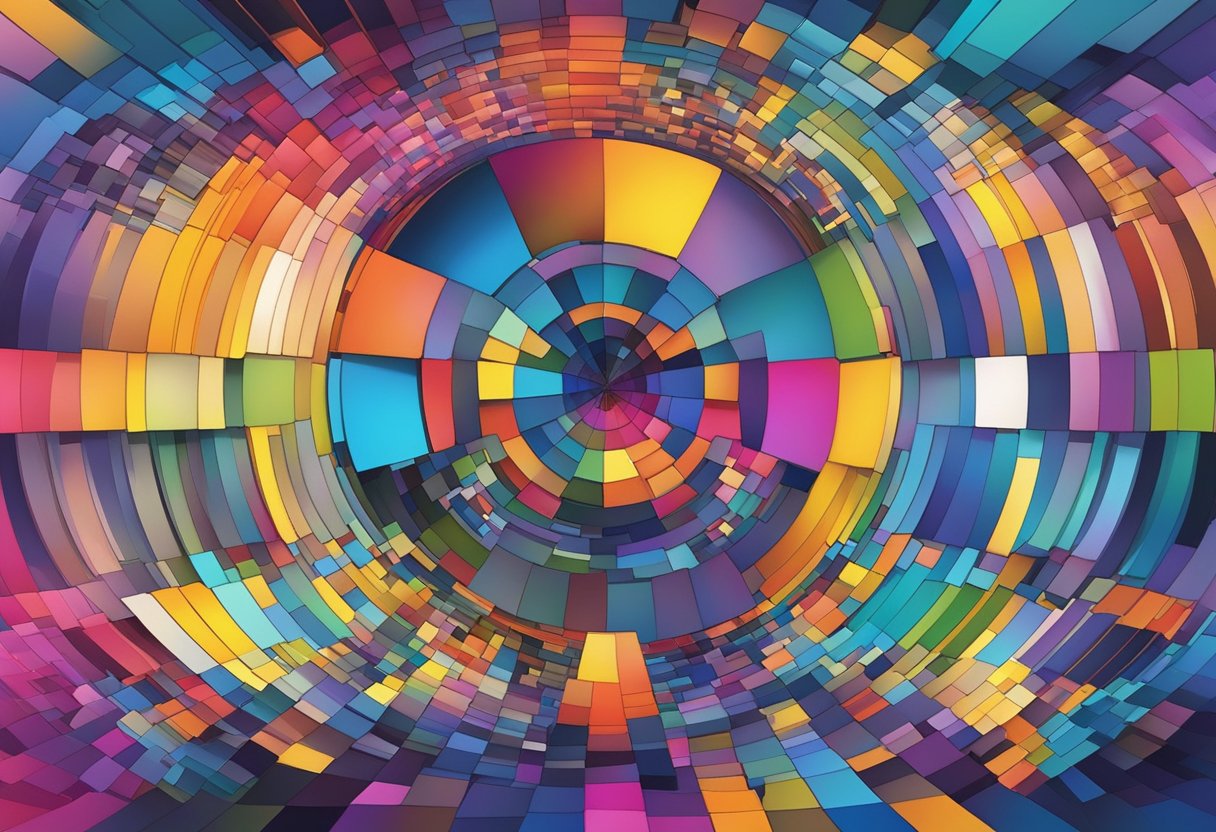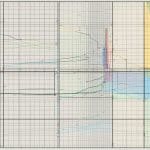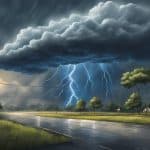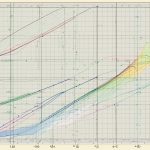Types Of Imagery
Imagery is a literary device that engages the human senses and creates a sensory experience for the reader. It is a powerful tool that writers use to bring their stories to life, making it easier for readers to imagine the world and characters they are reading about. Imagery can be used to describe anything from a person’s appearance to the smell of a room, and it can be used with or without figurative language.
There are five main types of imagery: visual, auditory, olfactory, gustatory, and tactile. Visual imagery is the most common and refers to descriptions that appeal to the sense of sight. Auditory imagery refers to descriptions that appeal to the sense of hearing, while olfactory imagery refers to descriptions that appeal to the sense of smell. Gustatory imagery refers to descriptions that appeal to the sense of taste, and tactile imagery refers to descriptions that appeal to the sense of touch. Writers use these different types of imagery to create a rich and immersive experience for their readers.
Fundamentals of Imagery
- Imagery is a literary device that engages the human senses.
- It creates a sensory experience for the reader and brings stories to life.
- There are five main types of imagery: visual, auditory, olfactory, gustatory, and tactile.
Sensory Imagery and the Five Senses
- Each type of imagery corresponds to a different sense: sight, sound, smell, taste, and touch.
- Visual imagery is the most common type of imagery.
- Writers use sensory imagery to create an immersive experience for their readers.
Literary Techniques and Imagery
- Imagery can be used with or without figurative language.
- Writers use imagery to create a picture with words for the reader.
- Imagery is a powerful tool that can be used to describe anything from a person’s appearance to the smell of a room.
Utilizing Imagery in Creative Writing
- Imagery is an essential tool for creative writers.
- It helps to create a vivid and immersive experience for the reader.
- Writers use imagery to make their stories more engaging and memorable.
Examples and Analysis of Imagery
- Imagery can be found in all forms of literature, from poetry to novels.
- Writers use imagery to create a specific mood or tone in their writing.
- Analyzing the use of imagery in literature can help readers to better understand the author’s intentions.
Key Takeaways
- Imagery is a literary device that engages the human senses and creates a sensory experience for the reader.
- There are five main types of imagery: visual, auditory, olfactory, gustatory, and tactile.
- Writers use imagery to create an immersive experience for their readers and make their stories more engaging and memorable.
Fundamentals of Imagery

Definition and Importance
Imagery is a literary device that employs sensory details to create vivid mental images in the reader’s mind. It is an essential tool for writers to convey emotions, moods, and ideas to their readers. Imagery can be used to appeal to all five senses, including sight, sound, smell, taste, and touch, in order to create a sensory experience for the reader.
Imagery is used to enhance the reader’s understanding and engagement with the text. It allows the reader to connect with the text on a deeper level by creating a sensory experience that is relatable and memorable. Imagery can also be used to set the tone and mood of a piece of writing, creating an emotional response in the reader.
Types of Imagery in Literature
There are several types of imagery used in literature, including:
-
Visual Imagery: This type of imagery uses descriptive language to create a mental picture in the reader’s mind. It is the most common type of imagery used in literature.
-
Auditory Imagery: This type of imagery uses descriptive language to create a mental image of sound. It can be used to create a sense of atmosphere or to convey emotion.
-
Olfactory Imagery: This type of imagery uses descriptive language to create a mental image of smell. It is used to create a sense of atmosphere or to convey emotion.
-
Gustatory Imagery: This type of imagery uses descriptive language to create a mental image of taste. It is used to create a sense of atmosphere or to convey emotion.
-
Tactile Imagery: This type of imagery uses descriptive language to create a mental image of touch. It is used to create a sense of atmosphere or to convey emotion.
In conclusion, imagery is a powerful tool that can be used to create vivid mental images in the reader’s mind. It is an essential tool for writers to convey emotions, moods, and ideas to their readers. By using different types of imagery, writers can create a sensory experience that is relatable and memorable for the reader.
Sensory Imagery and the Five Senses
Sensory imagery is a literary device that writers use to create a vivid and engaging experience for their readers. By using descriptive language that appeals to the five senses, writers can transport their readers to a different time or place, making them feel as if they are experiencing the story firsthand.
Visual Imagery
Visual imagery is the most common type of sensory imagery, and it refers to the use of descriptive language that appeals to the sense of sight. Writers can use visual imagery to create a mental picture of a scene, character, or object. For example, a writer might describe a sunset as “a brilliant orange ball sinking below the horizon, casting long shadows across the landscape.”
Auditory Imagery
Auditory imagery refers to the use of descriptive language that appeals to the sense of sound. Writers can use auditory imagery to create a mental picture of a sound, such as the rustling of leaves in the wind or the sound of waves crashing against the shore.
Olfactory Imagery
Olfactory imagery refers to the use of descriptive language that appeals to the sense of smell. Writers can use olfactory imagery to create a mental picture of a scent, such as the smell of freshly baked bread or the scent of a blooming flower.
Gustatory Imagery
Gustatory imagery refers to the use of descriptive language that appeals to the sense of taste. Writers can use gustatory imagery to create a mental picture of a taste, such as the sweetness of a ripe strawberry or the bitterness of a cup of coffee.
Tactile Imagery
Tactile imagery refers to the use of descriptive language that appeals to the sense of touch. Writers can use tactile imagery to create a mental picture of a texture, such as the roughness of sandpaper or the softness of a feather.
In conclusion, sensory imagery is a powerful tool that writers can use to engage their readers and create a vivid and memorable experience. By using descriptive language that appeals to the five senses, writers can transport their readers to a different time or place, making them feel as if they are experiencing the story firsthand.
Literary Techniques and Imagery
Imagery is a powerful tool in literature that allows authors to create vivid pictures in the reader’s mind. Literary techniques such as metaphors, similes, symbolism, personification, hyperbole, and onomatopoeia are commonly used to create figurative imagery in literature.
Metaphors and Similes
Metaphors and similes are often used in literature to create comparisons between two things. A metaphor directly equates one thing to another, while a simile uses “like” or “as” to make the comparison. For example, “Her eyes were a pool of sadness” is a metaphor, while “Her eyes were like a pool of sadness” is a simile.
Metaphors and similes can be used to create powerful images in the reader’s mind. They can also be used to convey complex emotions or ideas in a simple and understandable way.
Symbolism and Personification
Symbolism is the use of symbols or objects to represent something else. For example, a rose can symbolize love or beauty. Personification is the attribution of human characteristics to non-human things. For example, “The wind whispered through the trees.”
Symbolism and personification can be used to create powerful imagery that conveys complex ideas or emotions. They can also be used to add depth and meaning to a story.
Hyperbole and Onomatopoeia
Hyperbole is the use of exaggeration to create a dramatic effect. For example, “I’ve told you a million times” is a hyperbole. Onomatopoeia is the use of words that imitate the sound they describe. For example, “buzz” or “hiss”.
Hyperbole and onomatopoeia can be used to create vivid imagery that engages the reader’s senses. They can also be used to add humor or drama to a story.
In conclusion, literary techniques such as metaphors, similes, symbolism, personification, hyperbole, and onomatopoeia are powerful tools that can be used to create vivid imagery in literature. By using these techniques, authors can create stories that engage the reader’s senses and emotions, making for a more memorable and impactful reading experience.
Utilizing Imagery in Creative Writing
Imagery is a powerful tool that creative writers can use to bring their stories to life. By painting vivid pictures in the minds of their readers, writers can create a more immersive experience that draws the reader in and leaves a lasting impression. In this section, we will explore some of the ways in which imagery can be used in creative writing.
Setting the Scene
One of the most important uses of imagery in creative writing is to set the scene. By describing the setting in detail, writers can create a sense of place that transports the reader to a different world. This can be done through the use of sensory details, such as describing the sights, sounds, smells, and textures of the environment.
For example, a writer might describe a forest in the fall by saying, “The leaves were a riot of color, ranging from deep red to vibrant gold. The air was crisp and cool, with the scent of woodsmoke and damp earth on the breeze.” By using sensory details like these, the writer can create a vivid mental image of the setting that draws the reader in.
Character Development
Imagery can also be used to develop characters in a story. By describing their appearance, actions, and mannerisms in detail, writers can create a more fully-realized character that feels like a real person. This can be done through the use of descriptive language, such as using similes and metaphors to compare the character to other objects or animals.
For example, a writer might describe a character as “having eyes like a hawk, sharp and piercing.” This kind of description not only creates a vivid mental image of the character, but also gives the reader insight into their personality and demeanor.
Evoking Emotion
Finally, imagery can be used to evoke emotions in the reader. By describing events in a way that creates a strong emotional response, writers can create a more powerful and memorable story. This can be done through the use of figurative language, such as using symbolism or allegory to convey deeper meanings.
For example, a writer might describe a character’s heart as “a stone, heavy and cold.” This kind of description not only creates a vivid mental image of the character’s emotional state, but also conveys a deeper meaning about their personality and motivations.
In conclusion, imagery is a powerful tool that creative writers can use to bring their stories to life. By utilizing sensory details, descriptive language, and figurative language, writers can create a more immersive and memorable experience for their readers.
Examples and Analysis of Imagery
Imagery is a literary device that helps readers to visualize and experience the text more vividly. It is the use of descriptive language that appeals to the reader’s senses, creating a mental image or picture. Imagery is often used in poetry, prose, and drama to create a more immersive and engaging experience for the reader.
Imagery in Poetry
Poetry is one of the most common forms of literature that employs imagery. Poets use imagery to create powerful and evocative descriptions that appeal to the reader’s senses. For example, in the poem “Ode to a Nightingale” by John Keats, the following lines create a vivid image of a forest:
"Darkling I listen; and, for many a time
I have been half in love with easeful Death,
Call'd him soft names in many a mused rhyme,
To take into the air my quiet breath;
Now more than ever seems it rich to die,
To cease upon the midnight with no pain,"
Here, the poet uses imagery to describe the forest as a peaceful and serene place where he can escape from the world’s troubles.
Imagery in Prose
Prose is another form of literature that often employs imagery. In prose, imagery is used to create a more vivid and compelling description of a character, setting, or event. For example, in Cormac McCarthy’s novel “The Road,” the following passage uses imagery to describe the bleak and desolate landscape:
"The snow fell nor did it cease to fall. The gray sky was darkening toward the west. On the horizon in that crimson light lay like a lake of fire the huge slagheap of a foundry. The snow fell on the ash. The boy sat with his arms around his knees rocking back and forth. The man watched him, patted him, watched him."
Here, the author uses imagery to create a sense of hopelessness and despair in the reader’s mind.
Imagery in Drama
Drama is another form of literature that employs imagery to create a more immersive experience for the audience. In Shakespeare’s play “Romeo and Juliet,” the following passage uses imagery to describe the beauty of Juliet:
"O, she doth teach the torches to burn bright!
It seems she hangs upon the cheek of night
As a rich jewel in an Ethiope's ear;
Beauty too rich for use, for earth too dear!"
Here, the playwright uses imagery to describe Juliet’s beauty as something that is too precious for this world.
In conclusion, imagery is a powerful literary device that can be used in poetry, prose, and drama to create a more immersive and engaging experience for the reader or audience. It is a tool that allows the writer to appeal to the reader’s senses, creating a mental image or picture that enhances the overall reading experience.






